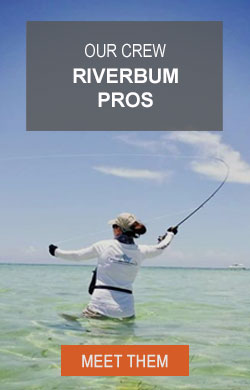Hooking Fish and Keeping Them Hooked
A recent question on this topic got me thinking about the best ways to hook and hold fish. Following will be two part tip to help in hooking fish and getting fish to the net or hand. This week we will look at setting the hook.
When I'm teaching beginners this is one of those trouble spots that usually needs some attention and practice to help to successfully land fish. Setting the hook is theoretically easy, it amounts to pulling on the line or rod to apply enough force to pull the hook into the fish. In practice, however, hook setting is a little tougher since the fish can take the fly from many angles, will spit the fly quickly on discovering that it is artificial, and can just seem to magically not get hooked or come unhooked quickly. It's best to start by trying to remember three simple things - set the hook quickly, set with the right amount of force, and set the hook at the right angle.
Set the hook quickly - This one is pretty simple. When a fish takes your fly, set the hook as soon as you notice the strike. The fish will usually determine very quickly after grabbing it that your fly doesn't taste or feel like the real thing. Furthermore, even if the fish doesn't reject your fly on taste or feel, you don't want them to swallow it and get a deep hook set that can seriously injure the fish or make it difficult to release. There is such a thing as setting too fast though, especially when a fish rises slowly to take a dry fly in calm water. In these situations wait just a split second for the fish to get the fly in its mouth and to turn back away or down, then set.
Set the hook with the right amount of force - The amount of force required to adequately set the hook into a fish's mouth will vary according to the size of the hook and the species and size of fish, and hardness of that particular fish's mouth.Your fly is probably tied on a relatively small hook for most trout fishing. On trout and most freshwater species the amount of force required to set the hook is not very much, just enough to completely tighten the line and bend a light rod moderately. On many larger fish or with larger streamers more force is required to set the hook. On some toothy and hard-mouthed fish, especially salt water species like tarpon, a lot of pressure is required to set the hook. On these big boys pull hard and maybe pull two or three times to adequately drive the hook into the fish.
Set the hook at the right angle - This aspect of hook setting is often overlooked. People just think if a fish pulls then pull back. There's a bit more to it. Think about which direction the fish is facing as it feeds. If it is facing you, as is the case in most downstream fishing or lake fishing with streamers, your hook set will be pulling directly out of the fish's open mouth. Try to always set back into the fish's body or give the fish time to take the fly and turn away from you before setting. In rivers it's pretty easy because fish face upstream almost all of the time so you can easily determine which direction to pull to set to the side of the mouth, up into the top of the mouth, or back into the fish. In lake fishing with sinking lines or fishing streamers of any sort downstream it is likely the fish is directly facing you as it takes your fly so it's best to give the fish a split second with some slack to turn and then strip set by pulling on the line quickly and steadily to apply the force, then lift the rod and put a bend in it. Lifting the rod only, instead of strip setting, with sinking lines or deep streamers is usually less effective because you cause a bow in the line which adds slack and doesn't apply force to the fly as quickly.






